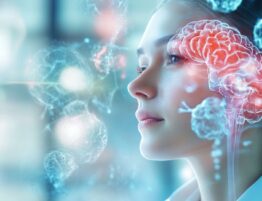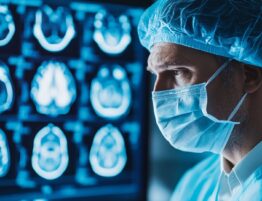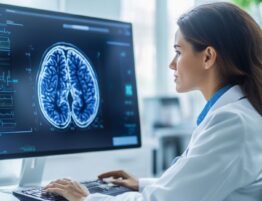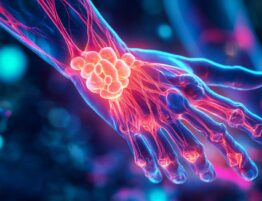Migraines in kids can be a debilitating condition. They significantly impact the quality of life and academic performance. Understanding the signs, triggers, and available treating options is crucial. This is crucial for parents to effectively support their adolescent children.
Recognizing signs is essential for early evaluation and management. Common signs include:
- Severe throbbing headaches.
- Nausea.
- Vomiting.
- Sensitivity to light and sound.
It is important to differentiate between this issue and other types of migraine. It’s because each type may need different approaches.
Identifying triggers can also help prevent future attacks. By identifying and avoiding these triggers, people may be able to reduce the frequency and intensity of migraines.
By increasing awareness, we can play a vital role in supporting our adolescent kids. Early evaluation, effective control, and a supportive environment can help cope with an issue.
Recognizing the Symptoms of Migraine in Teenagers
Migraines in kids can present with a variety of signs. They often cause significant discomfort and disruption to their daily lives. Identifying these signs is crucial for early evaluation and appropriate treatment.
One of the most common signs is a severe throbbing headache. It’s often described as a pounding or pulsating sensation. This pain can be on one or both sides of the head. And it may be usually accompanied by nausea, vomiting, and extreme sensitivity to light and sound.
In addition, kids with migraines may face visual disturbances. They are flashing lights, blind spots, or wavy lines. These visual signs are usually known as auras. And they can occur before, during, or after the pain.
It is important to differentiate between typical headaches and migraines in kids. Both can cause discomfort. However, migraines in teenagers tend to be more severe, longer-lasting, and often accompanied by other signs. Typical ones, such as tension or cluster headaches, may not have the same level of intensity.
Recognizing the early signs of migraine is essential. It’s for timely intervention and control. By identifying signs as they occur, parents and doctors can develop a plan. It’s to prevent and treat future attacks. Early evaluation can also help to alleviate the emotional and social impact of an issue.
Common Triggers for Teenage Migraines
Several factors can cause this issue. They contribute to the occurrence and intensity of their attacks. Understanding triggers helps people find and avoid potential migraine triggers. This reduces the overall impact of the condition.
Stress is a common stimulus for migraine symptoms in teenagers. It’s particularly during:
- Periods of high academic pressure.
- Social challenges.
- Family conflicts.
Managing stress through techniques such as relaxation exercises, mindfulness, or seeking support from family and friends can help cut the likelihood of attacks.
Diet can also play a role in triggering migraines. Foods like processed meats, aged cheeses, chocolate, and caffeine beverages can lead to an issue. Keeping a food diary can help find any specific dietary triggers. And people can make necessary changes to their diet.
Sleep disturbances can also contribute to problems in kids. Irregular sleep patterns, lack of sleep, or poor sleep quality can increase the risk of attacks. A regular rest schedule and creating a conducive rest environment can help prevent migraines. Those are usually associated with rest issues.
By identifying and addressing common triggers, one can take proactive steps. These steps can help reduce the frequency and intensity of migraines. Lifestyle changes can significantly impact prevention and control. Those changes include stress control techniques, dietary changes, and improving rest habits.
The Emotional Impact of Migraines on Teens
Migraines can have a significant emotional and social impact on teens. They affect their self-esteem, mood, and well-being. Understanding the emotional challenges is crucial. It’s for providing support and helping in coping with the condition.
Migraine can lead to feelings of frustration, anger, and sadness. The constant pain and disruption to daily lives can be overwhelming. It leads to a sense of hopelessness and isolation. One may also experience anxiety and fear about future attacks. It impacts the overall quality of life.
The social impact of migraine can be equally significant. The need to miss school or social events due to an issue can lead to feelings of embarrassment and social withdrawal. Students may struggle to maintain friendships and take part in extracurricular activities. It affects their overall social development.
Providing support from family and peers is essential. It’s for coping with migraines. Encouragement, understanding, and a supportive environment can help. Thus, kids can manage the emotional and social challenges associated with the condition. Seeking support from doctors or support groups can also be beneficial.
Effective Treatment Options for Teenage Migraines
Several treating options are available. They aim to cut the frequency, severity, and impact of attacks. The most effective one often involves a combination of methods. They’re tailored to the individual needs of each person.
Medications are a common component of treatment. Over-the-counter pain relievers, such as ibuprofen or acetaminophen, may be effective. They are for mild to moderate pains. For more severe or frequent ones, prescription meds may be necessary. Triptans are a class of meds specifically designed to treat migraine by targeting the underlying cause of the pain.
Lifestyle changes can also play a significant role in teenage migraine treatment. These changes may include:
- Maintaining a regular rest schedule.
- Controlling stress through relaxation techniques or mindfulness.
- Avoiding known triggers, such as certain foods or drinks.
- Regular physical activity.
- Eating a healthy diet.
Alternative therapies may also provide relief for some people with migraine. These therapies can include:
- Acupuncture.
- Biofeedback.
- Massage therapy.
- Cognitive-behavioral therapy.
It is important to note that the most effective treatment plan for migraine symptoms in teenagers may vary from person to person. What works well for one may not be as effective for another. Working closely with a doctor is essential. It’s to develop a personalized treatment plan. It will address the specific needs and preferences of each individual.
Parents can play a crucial role in implementing effective treating options for their children. They can help by:
- Tracking their kid’s signs and triggers.
- Encouraging adherence to med regimens.
- Supporting lifestyle changes.
- Seeking professional help when needed.
Coping Strategies for Teens Dealing with Migraines
Living with migraine can be challenging. However, there are several coping strategies. They can help people manage migraines and improve teens’ quality of life.
One effective coping strategy is to learn relaxation techniques. These techniques can help cut stress and anxiety. They both can cause migraines. Some examples of relaxation techniques include:
- Deep breathing exercises.
- Progressive muscle relaxation.
- Mindfulness meditation.
- Yoga.
- Tai chi.
Keeping a diary can also be helpful for kids. Tracking the frequency, duration, and severity of pains can help identify potential triggers. This way, individuals can develop strategies to avoid them.
Maintaining a healthy lifestyle is another important aspect of coping with migraine symptoms in teenagers. Getting enough rest, eating a balanced diet, and staying active can help cut the occurrence and intensity of attacks.
It is also important to have a strong support system for successfully coping with an issue. Talking to friends, family, or a trusted adult about their experiences can help them feel less alone and cope with the challenges of living with headaches.
The Role of Parents in Managing Teen Migraines
They play a crucial role in supporting. They can provide understanding, encouragement, and practical support. They can help their kids cope with the challenges of the condition and boost their quality of life.
One of the most important things parents can do is to listen to their teen’s experiences with migraine. They can understand their teens’ migraine signs, triggers, and emotional challenges. They can provide the necessary support and reassurance. Open and honest communication is essential. It’s for building a trusting relationship and helping the kid feel understood.
Parents can also help their kids control migraines by creating a supportive environment at home. This may involve making accommodations for their kid’s needs. For example, providing a quiet, dark room for rest during attacks. Encouraging healthy lifestyle habits also helps cut the occurrence and intensity of migraine. It includes regular sleep, a balanced diet, and stress control techniques.
It is important for us to encourage our kids to take an active role in managing their migraine. This may involve helping them:
- Find triggers.
- Keeping a headache diary.
- Following their treatment plan.
Empowering kids to take ownership of their health can help them develop coping skills and build resilience in case of migraine in teenagers.
Parents can also help their kids connect with other resources. For example, support groups or online communities for people with migraines. These resources can provide valuable information, support, and a sense of belonging.
Parents can provide understanding, support, and encouragement. Then, they can make a significant difference in the lives of their kids. Parents and kids can develop strategies for controlling the condition and improving well-being.
And with a reliable healthcare provider, you can get comprehensive medical services tailored to your needs. From routine check-ups to specialized treatments, our experienced team is ready to provide you with the highest quality care.
Don’t wait any longer. Schedule an appointment today and discover the difference our clinic can make in your health.













Please, leave your review
Write a comment: